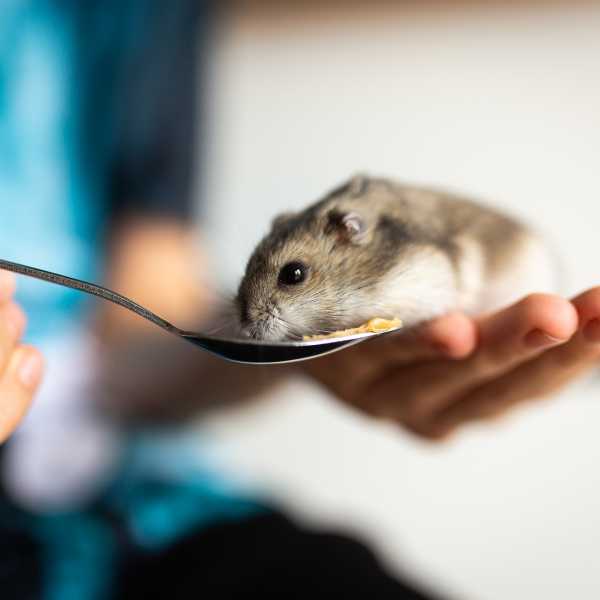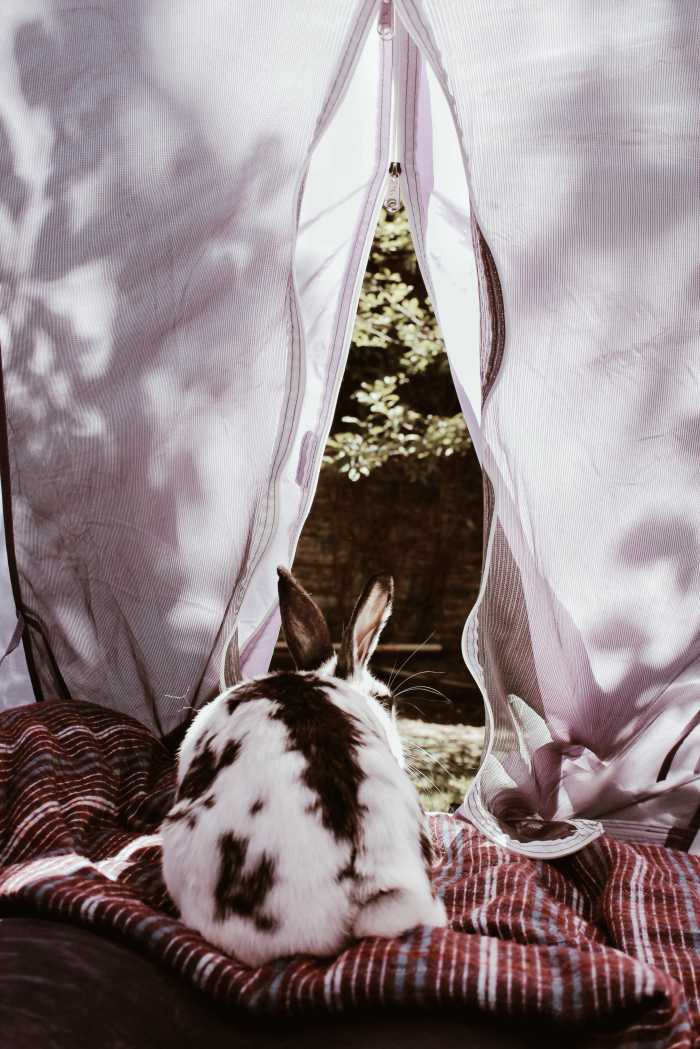
PetsRadar - How to bunny-proof a room and keep your indoor rabbit safe
Posted on 15 November, 2021

Photo by Julián Gentilezza on Unsplash
Written by Kathryn Rosenberg
Learning how to bunny-proof a room is vital if you’re planning on letting your floppy-eared friend roam free indoors. While the adorable rabbit might look cute and innocent, their love of chewing and burrowing can lead to widespread household destruction if they’re left to wander unattended without the proper safeguards.
For some pet parents, keeping their rabbit outdoors in one of the best rabbit hutches and only bringing them indoors for supervised play is their preferred choice for ensuring their homes remain free from rabbit-induced wear and tear, but what about if you’re wanting to keep your bunny close?
Investing in one of the best indoor rabbit hutches is a great way to keep your bunny and home safe when you’re out and about, but for days when you’re wanting to let them explore, you’ll want to make sure that they’re not going to get themselves into any mischief that could harm them or your home. While you can train your rabbit not to enter certain rooms or to keep their teeth off particular objects, even the most well-trained bunny can have an off day, which is why training is best combined with bunny-proofing for maximum safety.
The good news is, learning how to bunny-proof a room doesn’t have to be difficult or expensive. There are plenty of simple tips and tricks that are easy to implement and super-affordable, allowing your rabbit to safely enjoy all the comforts of indoor life without destroying your home in the process.
What is bunny-proofing?
Bunny-proofing, also known as rabbit-proofing, is a way to keep your floppy-eared friend safe, while also protecting your living spaces from their potentially destructive habits. While chewing, burrowing, and digging, are all healthy and normal rabbit behaviors, common household features, such as wires, can pose a safety hazard.
If you’ve just welcomed a rabbit into your family, we recommend going through your home and looking at it from your four-legged friend’s perspective. Examine everything at ground level that may pose a risk to them while also considering the parts of each room that may come under attack from their feet or teeth.
The goal of bunny-proofing is to provide your rabbit with healthy and productive ways to channel their natural instincts, while also keeping them safe. You can choose to bunny-proof a single room where you plan to let your rabbit play and exercise, or you can bunny-proof your entire home so they can be a fully-fledged member of your family.
Bunny-proof your wires
Wires are a favourite target for rabbits because they resemble the roots and shoots they’d chew in the outdoors. With our homes filled with more wires than ever before, protecting your rabbit from electrocution and your expensive electronics from being ruined has never been more important.
Rabbits have razor-sharp teeth, which the soft plastic insulation that’s used in power cables offers no protection against. While training your bunny can help deter them from chewing certain things, it’s extremely hard to deter them from going after wires. Highly curious and naturally fond of crawl spaces, the back of your TV or office desk call to your rabbit in much the same way as that bar of chocolate calls to us humans.
One of the easiest ways you can deter your rabbit from chewing through the wires of your electronic devices is to make them less accessible by rearranging your furniture. Where possible, push furniture up against the wall to conceal wires and sockets, angle desks into a corner to create a closed-off space for the wires, and use pet fences in areas where wires can’t be hidden.
If you’re not wanting to use a pet fence and have spaces where there’s no option but for wires to be exposed, we’re huge fans of using split-loom tubing. This is an affordable and straightforward hack where you slip tough plastic piping over your electric cables. It’s flexible enough for you to attach but strong and durable enough that your bunny’s teeth can’t penetrate it.
Bunny-proof your flooring
Rabbits love to dig and this is especially true of females who are the ones that dig the tunnels and burrows for their families in the wild. When they’re indoors, bunnies love rugs, carpet, and any other padded-surface that satisfy their urge to dig. While you can’t stop your rabbit from digging, you can discourage it in certain areas or use diversion tactics to encourage them to dig in designated places.
We highly recommend that you choose to keep your bunny in a room that doesn’t have carpet. Not only will you struggle to stop your rabbit from destroying it, but they can accidentally ingest the toxic fibers. Opt for a room with hardwood or tiled floors or those that use linoleum or vinyl. These are great choices, not just because they can’t be dug into, but they’re also much easier to clean and maintain for you as a pet parent as any messes can be easily wiped away.
If necessity warrants your bunny being in a carpeted room, cover the carpet with a plastic mat or tarp, especially around the corners and the doorway. You can also try mixing up a natural spray of equal parts white wine vinegar and water and applying it to your carpet. Some rabbits really dislike the taste and it will stop them from chewing, but it does leave a light residue.
Another attractive chewing option that can prove irresistible to bunnies is the trim that runs along the lowest part of an interior wall, known as the baseboard. Because rabbit’s teeth grow continuously, they’re always in search of tough surfaces that will allow them to wear their teeth down. Given that corners are their preferred place to dig and chew, your baseboards are vulnerable to being destroyed.
The best way to protect your baseboards is to apply a protector. You can make these yourself by using wooden planks or cardboard or by running a fence around the perimeter. Cat scratch mats also do a wonderful job, provided they’re nice and flexible, and plastic corner protectors can work well too.
Bunny-proof your furniture
Rabbits love getting into nooks and crannies, and where better to burrow, chew, and hide out than under a bed or sofa? With that in mind, blocking off the underneath of your furniture can ensure that when it comes time to rearrange it, you don’t find yourself staring in dismay at destroyed floors.
Storage cube fencing is a great option for this as it has a variety of configuration options and is easy to assemble. For rooms where you don’t want fencing on display, try plastic desk mats that your rabbit won’t be able to chew through.
For furniture legs, there’s a wide range of options available. Chair and table legs do well with ‘shoe’ protectors made from PVC, rubber, or silicone that slip over the legs, and as a bonus, they’ll also help protect your hardwood floors from scratch marks.
When it comes to your couch, the best solution is the same one that feline pet parents often adopt and that’s using transparent scratch guards or plastic protectors. If you want a rustic and funky look, why not consider a large willow bridge? Found in most pet stores, willow bridge toys are made from sticks and are joined together in an elbow shape that fits nicely around couch corners.
Beware of houseplants
Many common houseplants are toxic to rabbits and unlike their wild relatives, domesticated bunnies often lack the instincts to know which ones are safe to nibble on and which ones aren’t. All plants need to be kept off the ground and out of reach of your rabbit, not just for their safety but also to avoid them digging and throwing soil all over your floor.
If you’re keeping your rabbit contained to one room of the house, we recommend forgoing the plants in that space entirely or fencing off large potted plants to prevent your bunny from gaining access.
Distract and divert
One of our favorite bunny-proofing tips is to distract and divert your floppy-eared friend with plenty of fun and safe chewing and digging options. The best rabbit toys are a wonderful way of occupying and entertaining your rabbit, while also providing them with plenty of exercise and mental stimulation.
As with all things, variety is the spice of life, so choose a mixture of chew toys, climbing toys, and puzzle toys to hold your rabbit’s attention and keep their days interesting. Tunnels are also a great choice as these tap into their love of burrowing and can stop them from making a beeline for underneath your furniture.
For another great option, why not make a cheap and cheerful digging box? Use whatever you have available, both plastic and cardboard work well, and fill it with shredded paper, toilet rolls, toys, and treats that your rabbit needs to dig for. A digging box is a perfect way to channel your bunny’s chewing and scratching instincts in a fun way that won’t harm them or your home.
Kathryn Rosenberg
Kathryn is a freelance writer with a passion for creating health and wellness, travel and wildlife content. Originally from New Zealand, her nomadic lifestyle has her currently fur baby-less. She scratches her pet parent itch by stealing frequent cuddles with any neighbourhood cat kind enough to indulge her.
To read the original article, please visist: www.petsradar.com/advice/how-to-bunny-proof-a-room-and-keep-your-indoor-rabbit-safe
Tags:



